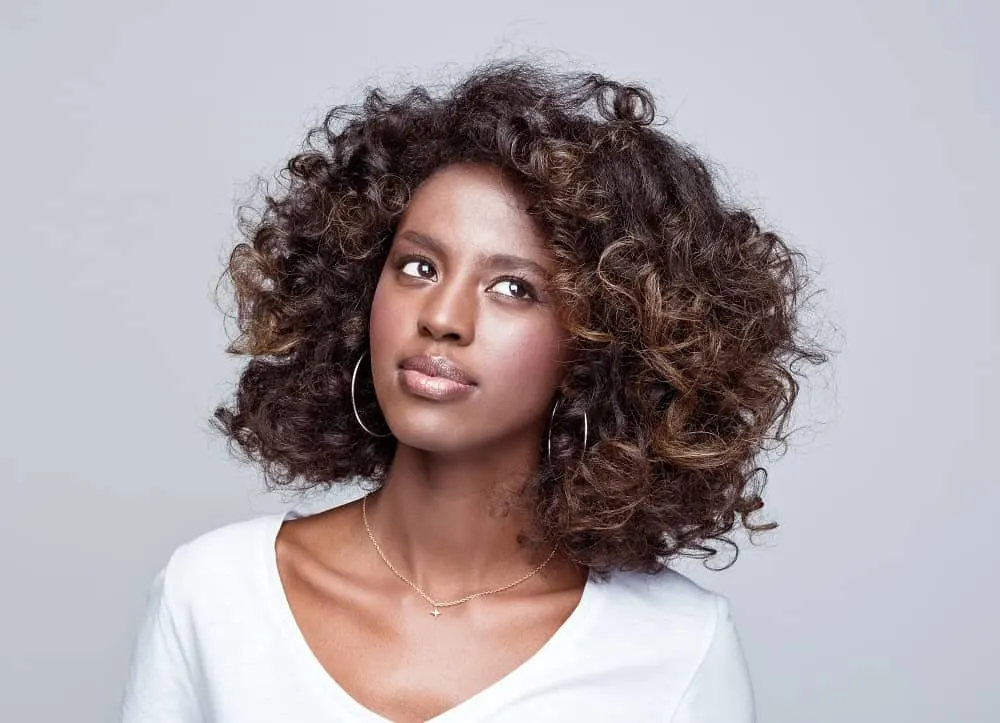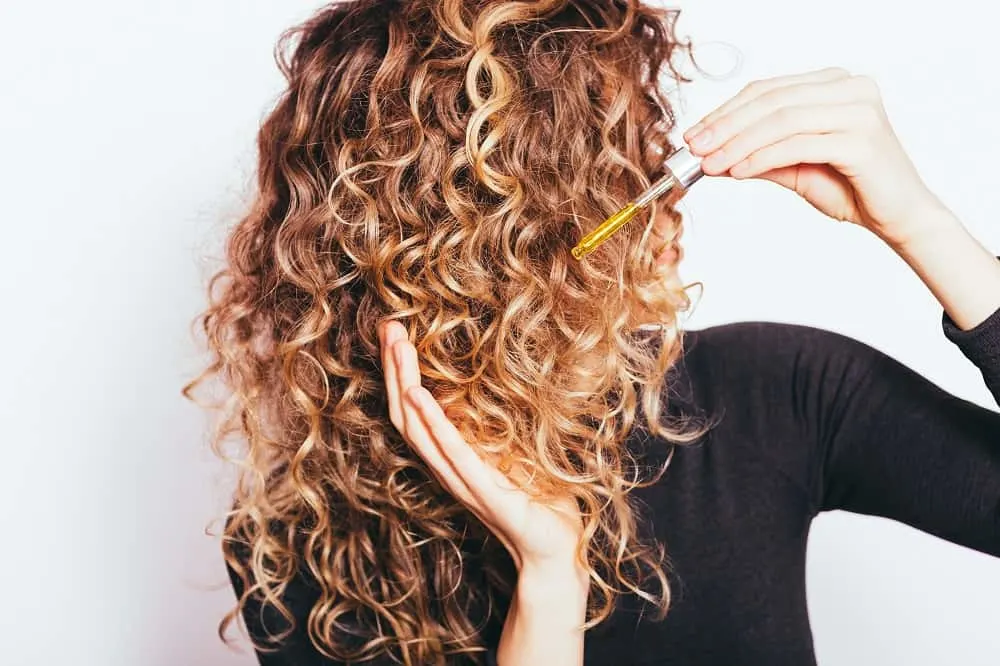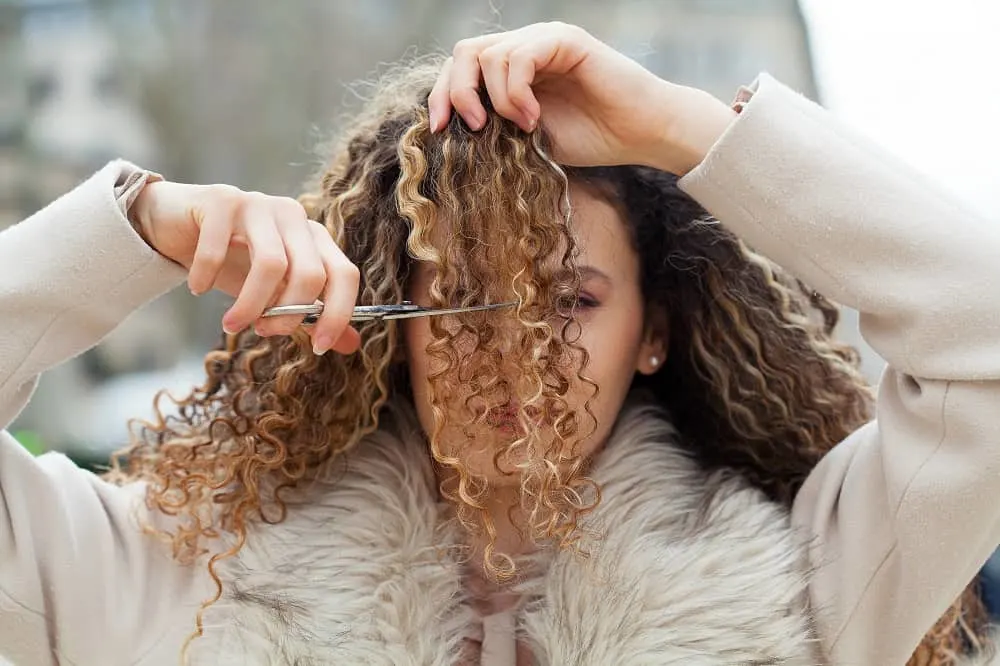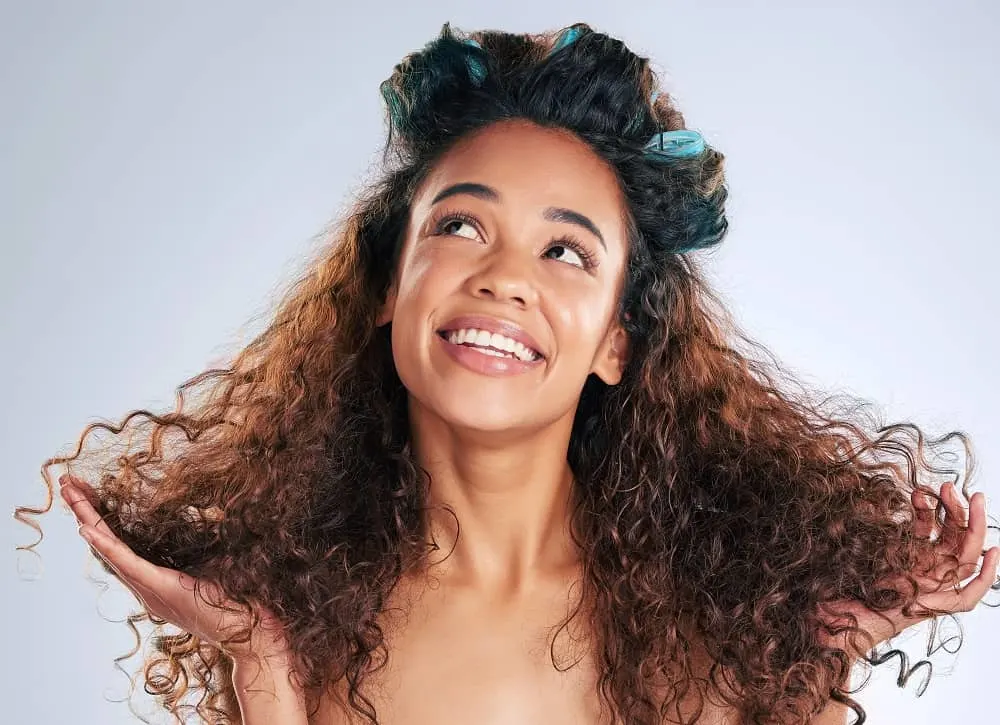You’ve always known you had finer hair on some parts of your head and thicker, coarser curls in other areas. But maybe you didn’t realize you have multi-textured curly hair until you looked closer and tried to discover your curl type.
Well, welcome to the club! Almost all people with curly hair have more than one texture somewhere on their heads. Most have two; some even have three. Before we get into how to take care of multi-textured hair, let’s discuss what exactly it is.
What is Multi-Textured Hair?
Multi-textured hair refers to hair that doesn’t have a uniform curl pattern throughout. Instead, it exhibits a variety of textures, such as having wavy curls at the front and tighter curls at the back, or a combination of thin and thick strands. This diversity in texture can be natural or result from transitional phases like growing out chemically straightened hair.
It’s a common occurrence and can present unique styling and care challenges due to the differing needs of each hair texture.
Why Do I Have Multi-Textured Hair?

Hair can have more than one texture for different reasons, but the primary reason is genetics. Maybe your Dad or Grandad has a looser curl pattern than your Mom or Grandma, so you get both textures on one head. There are some other reasons for it though:
“Hair can have more than one texture for different reasons, but the primary reason is genetics.”
Ghanima Abdullah
You’re Transitioning to Natural Hair
This sounds obvious. Of course, you’ll have two different textures if you’re transitioning: the chemically processed and natural parts. But wait, you’ll have three. That’s because when the chemicals get on the scalp, they change how your scalp produces hair–at least temporarily.
But you will probably never notice this unless you do a big chop. With a big chop, your hair might be straighter for the first month until your texture starts to come in.
On the other hand, harsh chemicals from relaxers, keratin treatments, and bleaching can damage the hair follicles in some areas of the head. This might be wherever your stylist rubbed in the product the most: at your nape, hairline, or crown. So in those areas, your hair might be a different texture, with tighter or looser curls.
Harsh chemicals can actually damage the hair follicles, leaving parts of your hair with a different texture.
You Have Areas with Damaged Hair
Some parts of your hair might be straighter than others because of heat damage. Otherwise known as “training”, heat damage happens when the proteins of the hair are stretched with heat to the point when they cannot bounce back. A lot of tight pulling can cause the same issue.
You’re Aging
With age and hormonal differences, you might find parts of your hair have a different texture. Hormones can change the shape of follicles, so you might have a looser curl in parts of your head.
On the other hand, hair loss starts with finer hair in the area. So, if you notice your texture is changing and there is thinning in the area, you might have pre-alopecia.
Do You Have Multi-Textured Hair?
Multi-textured hair means having various types of strands, such as loose curls, tight coils, and varying thicknesses. If your hair shows these differences, you likely have multiple textures.
This hair type is quite common and can change over time. Factors like transitioning from chemically straightened to natural hair often cause changes in texture.
To identify if your hair is multi-textured, observe if different sections have unique curl patterns or thickness.
How to Care for Multi-Textured Hair
Differing textures are usually very obvious to the touch and the hair might also behave differently. The ease of combing might differ from section to section and the curls will be visibly tighter or looser. This means detangling is probably a challenge. Here’s how to care for your multi-textured hair.
1. Pre-shampoo

You can pre-poo with oils, butters or a homemade combination of both. These products seep into the hair shaft over time to provide strength. They also fill the hair shaft so that excess water and detergents can’t enter while you’re washing.
When shampoo enters the hair shaft, it can be corrosive. Excess water can cause your cuticle to lift, which can cause damage during the difficult process of detangling multi-textured hair.
2. Section It Off
Before you wash your hair, take a minute to separate it according to texture. Then, wash and condition your hair. Detangle it with the conditioner still in. This will make the detangling process much more manageable. If you pre-shampooed, you’ll find very few shed hairs.
3. Apply Your Products Accordingly
Where you have tighter curls, you’ll probably need more products like leave-in conditioners or curl definers. So don’t skimp! It will help make those areas softer and easier to manage. Where your hair is less tightly curled, there’s no problem using a lighter hand with products.
4. Don’t Be Afraid of Scissors

Just make sure to use sharp hair shears – not kitchen scissors. If the sides and nape are finer hair, you can cut it shorter so that it doesn’t look so different from your tighter curls and droop outside your style.
If your hairline or bang area is finer than the rest of your hair, consider cutting it short and using edge control to have beautifully laid ‘edges’. It’s up to you, and of course, you have to consider where your hair is finer and will look good cut shorter.
But! You don’t want to cut tighter curls and leave the looser ones longer. That might look a little strange.
If the sides and nape are finer hair, cut it shorter so that it doesn’t droop outside your style.
5. Embrace Frizz and Shrinking
We’re always trying to reduce frizz, but embracing it will give your curls a more uniform look. Once you wash and condition your hair, let it air dry. You’ll probably come out with an afro or huge curly hair, and that’s okay.
You’ll get the most compliments from beautifully frizzy styles. If you feel like it looks messy, grab a pair of hair shears and lightly trim away flyaways.
6. Style with Rollers

If you like a curly style, try changing up your look by using rollers instead of displaying your natural curl pattern. Wash and go might highlight your different textures and twist-outs and braid outs are not strong enough to get you a uniform curly look.
Rollers help make your curls uniform, and you can always use two different sizes to get a different look. Often larger rollers are used up top and smaller-sized rollers are used on the sides and back. If you have two or three different textures, rollers can go a long way to getting you the style you like.
“Rollers help make your curls uniform, and you can always use two different sizes to get a different look.”
Ghanima Abdullah
Roll your hair in small sections using a curl-defining cream. Flexi Rods are the best for beginners and you can graduate to using hard rollers and endpapers later. When you’re finished rolling, spritz your hair with water so it’s uniformly wet. Apply a hair net and use a hair bonnet attachment to dry your curls thoroughly with a blow dryer. Or try a hooded dryer.
7. Use an Updo or Side-Do
Try an updo for the areas you’d like to highlight and hide for the day. Don’t worry, side do’s are also possible. And if you want to show off the curls in the back of your head or up top, try a puff.
How to Style Multi-Textured Hair
Styling multi-textured curly hair begins with prioritizing its health. Regularly balance moisture and protein levels using deep conditioners or overnight masks. Multi-textured hair means varied curl patterns; you might have wavy curls at the front and tighter patterns at the back, especially if transitioning from chemically straightened hair.
Begin with frequent co-washing, using a detangling brush under cold water for luster and hydration. This ensures each texture gets the nutrients it needs. Stylist Whitney Eaddy suggests extra care for multitextured hair, like sectioning and finger coiling strands for uniform curls and definition.
Spot styling can address areas of frustration; use hot tools like flat irons on super curly sideburns or tight coils for a uniform look. Always protect hair with heat protectants and deep treatments. Alternatively, go heat-free with methods like rag sets or sock curls for overnight, uniform texture.
Different hair sections might need varied products or amounts. Distribute moisturizers and nourishing products evenly, providing extra hydration to kinkier textures. Understanding which parts need more care leads to healthier, defined curls.
For a lasting change, consider professional chemical treatments like perms or straightening, but consult a stylist to avoid damage. With patience and the right techniques, you can embrace and enhance the unique beauty of your multi-textured curls.
FAQs
Yes.
If your hair is fine in diameter, it might be easy to get straight just by pulling it. Pulling your hair stretches the proteins, but if you have fine hair, it doesn’t always bounce back. So your new hair growing in will be curly, and it can be straight on top.
You can try salt spray.
You can try rollers if you want all your curls to come out the same.
You might have damaged your waves with heat.
Type 3 curls are spiraled ringlets.
This is a perm that uses different sizes of rollers so that your curls come out in different sizes. It looks more natural like this because many people with curly hair have more than one texture or size of curl.
Yes, perms use corrosive chemicals to make your hair permanently the curl size of the roller they set your hair on.
Layers can make your hair appear thinner or more voluminous, depending on how they’re added. But textured hair is hair that has a wave or curl to it.
More Related Articles:
